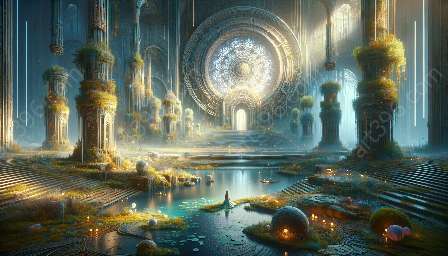Understanding psychological archetypes is essential for creating compelling creature designs in concept art. By delving into the depths of human psychology, artists can tap into universal symbols, themes, and traits that resonate with audiences on a profound level. This article aims to explore the relationship between psychological archetypes and creature design, providing valuable insights for concept artists seeking to infuse their creations with deeper meaning and resonance.
The Power of Archetypes in Creature Design
Archetypes, as defined by famed psychologist Carl Jung, are universal symbols and motifs that are inherent in the collective unconscious of humanity. They represent fundamental human experiences, emotions, and personality traits that transcend cultural boundaries. By tapping into these archetypes, concept artists can imbue their creature designs with profound meaning and resonance that resonates with audiences on a primal level.
Exploring Psychological Archetypes
When delving into psychological archetypes for creature design, it's crucial to understand the various archetypal motifs that have endured throughout human history. From the hero's journey to the wise mentor, the trickster, the shadow, and the anima/animus, each archetype represents a different aspect of the human experience. By consciously infusing these archetypal motifs into creature design, artists can create characters that evoke powerful emotions and resonate with audiences.
Applying Psychological Archetypes to Creature Design
Concept artists can apply psychological archetypes to creature design by imbuing their creations with traits, behaviors, and symbolism that embody specific archetypal themes. For example, a creature inspired by the hero archetype may possess noble characteristics, a sense of bravery, and qualities that reflect the journey of self-discovery. Conversely, a creature aligned with the trickster archetype may exhibit mischievous behavior, cunning intelligence, and a propensity for causing disruption.
Creating Emotional Resonance
By incorporating psychological archetypes into creature design, artists can create characters that resonate deeply with audiences. Whether evoking feelings of awe, fear, empathy, or admiration, archetypal creatures have the power to stir profound emotions within viewers. This emotional resonance not only enhances the visual impact of concept art but also fosters a deeper connection between the audience and the artistic creation.
Integrating Archetypal Symbolism
In addition to character traits and behaviors, concept artists can integrate archetypal symbolism into their creature designs. Symbolic elements such as colors, shapes, and motifs can be strategically employed to convey specific archetypal themes. For instance, the use of regal colors and heraldic motifs may evoke the archetype of kingship or nobility, while serpentine forms and deceptive patterns could allude to the trickster archetype.
Case Studies and Examples
To further illustrate the application of psychological archetypes in creature design, this article will delve into case studies and examples from renowned concept artists. By examining how artists incorporate archetypal symbolism and thematic motifs into their creature designs, readers can gain practical insights and inspiration for their own artistic endeavors.
Conclusion
Understanding psychological archetypes is an indispensable asset for concept artists striving to create impactful and resonant creature designs. By harnessing the power of universal symbols and themes deeply ingrained in the human psyche, artists can elevate their concept art to a new level of significance and emotional resonance. Through conscious application of psychological archetypes, concept artists can craft creatures that captivate, inspire, and deeply move their audiences, leaving a lasting impression in the realm of creature design and concept art.

